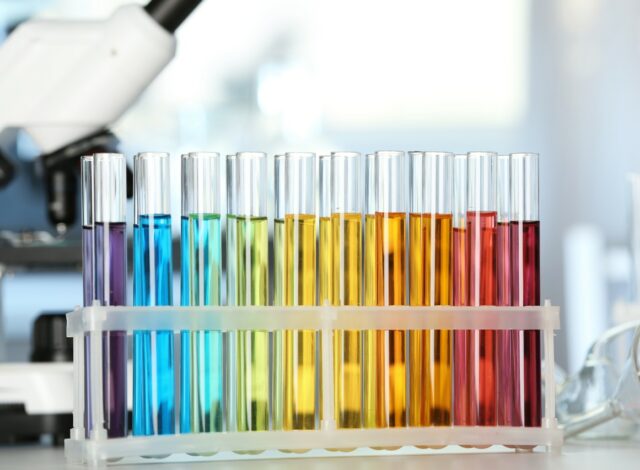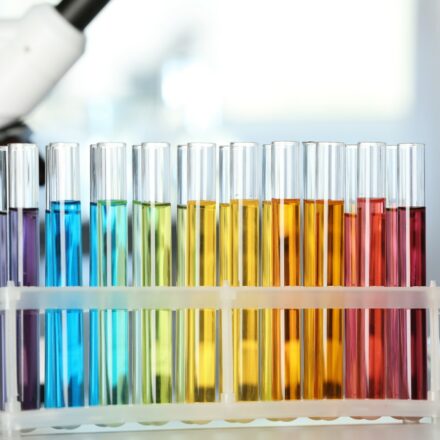For queer scientists like Lauren Esposito, one can be the loneliest number. Esposito, curator and Schlinger Chair of Arachnology at the California Academy of Sciences in San Francisco, was not only the first openly queer curator at her institution, but she has rarely met an LGBTQIA+-identified member in her field.
This sense of professional isolation prompted Esposito to launch 500 Queer Scientists, a visibility campaign and community for LGBTQIA+ people and their allies who work in STEM and STEM-related fields.
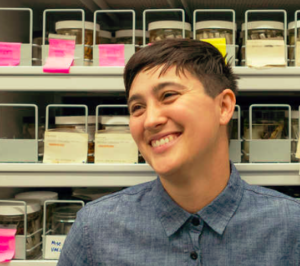
“I realized I had never been in a lab with a queer person, I never had a queer mentor, I never had a queer professor,” Esposito says. “I wanted to find some community. I felt like if I’m living in San Francisco and working in the oldest scientific institution west of the Mississippi—other people probably feel the same way.”
A booming network
It turns out they did. Since its 2018 launch, 500 Queer Scientists has expanded from its initial goal of spotlighting 500 individuals to include more than 1,700 self-submitted profiles. The site now offers a searchable database by discipline or region to facilitate networking within a multitude of fields, spanning science, engineering, medicine and technology.
“It’s grown into a community where people support and find each other,” Esposito says.
Sophie Middleton, an experimental particle physicist at the California Institute of Technology and one of the 500 Queer Scientists, sees the site as helping to make the lab a more welcoming space.

“I am a true believer that we should be able to bring our whole selves into the lab, irrespective of sexual orientation or gender identity,” Middleton says. “Many young LGBTQIA+ scientists leave their fields, a large factor in this is a sense of isolation and lack of belonging. Earlier in my career, I felt this way myself, as there were very few out lesbian scientists. I hope to provide a visible presence, which can help change perceptions and highlight the diversity of researchers in STEM.”
Industry vs. academia
The experience of being queer in science can vary depending on your area of study, whether you work at a university or company, and where you live.
Chris Egner, who has several decades of experience working as an engineer at both big tech outfits and startups in Silicon Valley, has seen the tech industry become largely accepting of LGBTQIA+ diversity. It’s standard practice now to organize employee resource groups (ERGs), provide supportive benefits, and participate in Pride parades and other community events.
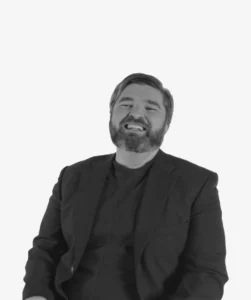
“People here are just out, and you meet incredibly talented people with purple hair who are not cisgender, and that’s not considered unprofessional,” says Egner, who is the head of engineering at Science. “That’s been an important cultural shift—being you isn’t considered unprofessional.”
Identifying as LGBTQIA+ also can fit with the non-traditional West Coast start-up culture. “We don’t wear fancy clothes because we’re not signaling how big our bonus was last quarter,” Egner says. “The results at work speak for themselves. There’s a different culture and different expectations.”
But location matters, as do evolving attitudes. During a summer internship in college several decades ago, Egner recalls a Pride flag being stolen from a federally funded lab in a remote spot near Santa Fe, New Mexico. “This place had top security—it didn’t happen by accident,” he says. “Visibility in the workplace really matters. It’s what sets the norm. People talk about rainbow-washing, but having the rainbows out there does really matter more than people realize.”
In the more button-down world of academia, the Pride flag may fly unfettered, but colleagues may still assume you’re straight. According to Esposito, there’s limited data on the number of LGBTQIA+-identified people in science.
Fewer opportunities, greater challenges
But a 2021 report, based on a survey of 25,000 researchers, found that LGBTQIA+ scientists are 30% more likely to face harassment and 20% more likely to have their careers devalued than their non-LGBTQIA+ peers.
“The culture of science is one that often feels unfriendly and unwelcome in terms of bringing your whole identity,” Esposito says. “It can feel like you’re an imposter or not valued as an individual.”
Given the importance of networking and collaboration, queer scientists must decide whether they can be their authentic selves and how it might impact their careers.
“Up to the point I started 500 Queer Scientists, had never met another queer arachnologist,” Esposito says. “That can make for uncomfortable questions and creates a vulnerability that my cisgender peers aren’t exposed to. It means you’re coming out constantly. Oftentimes, people assume you’re straight because that is what’s normative within science, so you’re forced to come out. That creates awkward conversations and creates a sense of tension and makes you feel like you don’t belong in the group.”
The role of gender
For Charlotte Hamilton, a longtime executive in the battery industry, coming out as a trans-woman last year has underscored how gender shapes perception in the workplace. “I transitioned with a metric ton of privilege—I had a position as a CEO and had a long career of running venture capital-backed companies. I was at the point in my career that I think being transgender could move more into the background fairly quickly.”
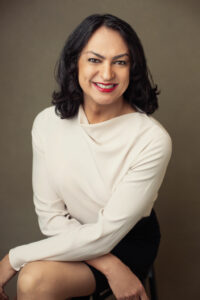
At the same time, Hamilton, who is co-founder and CEO of Conamix, has adjusted her communications style in recognition of how her mostly male audiences now react to her.
“I do sense a difference in how I’m treated as a woman vs. when people perceived me as a man,” Hamilton says. “As a woman and as a woman CEO, you have to recognize how important it is to build coalitions around your thoughts in a way that puts more strength behind what you’re saying. It’s a difference in style that I’ve learned becomes more necessary as I’m viewed as a woman in the business world.”
When she was male-presenting, Hamilton, who has led several companies and has several patents in her name, felt she could be more free to express her thoughts during a meeting and still maintain her authority.
Perceptions matter
“As someone who was previously perceived as a man in business, I had more of the benefit of the doubt,” Hamilton says. “You could move faster, you could present something that didn’t have as many details buttoned down. As a woman in science and business, that’s just unheard of. I’ve learned that fairly quickly—I’m extremely prepared in a way I didn’t have to be when I was perceived as a man in science and business.”
As Hamilton has made her transition at the professional level, she has stood out from her straight male peers. “I’m over 6 feet tall, and I don’t wear flats for business,” says Hamilton, who is on the Gaingels 100 list of prominent LGBTQIA+ entrepreneurs and founders. “I’m almost always the only woman in the room for business and almost always the tallest woman.”
From her literal and metaphorical perch, Hamilton sees her coming out as an important step to helping diversify her field. “I’ve been able to increase connections to other people who add diversity to that intersection of hard tech and venture capital,” says Hamilton, who’s also part of the Gaingels 100 list. “Within my own company, I have been able to increase recruitment of more diverse candidates. We recruit the best in the field and get more applicants because the company has a diverse leadership team.”
Changing times on campus
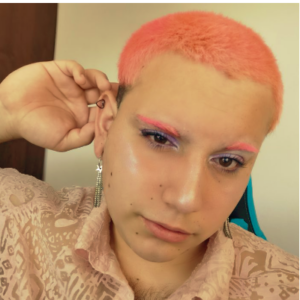
For 500 Queer Scientists member Jose Bustamante Salazar, who is wrapping up his undergraduate degree in biochemistry at the University of Chile in Santiago, Chile, and identifies as a trans/non-binary person, they want to be the role model they didn’t have growing up. “I didn’t have role models of queer scientists in my childhood,” Bustamante Salazar says. “I want queer children, teenagers and adults to have examples like us, so they know they can do whatever they want in life.”
On campus, Bustamante Salazar, who is also the co-founder of Hablemos de Ciencia, a group that promotes inclusive communications about science, has mostly found acceptance. But as they near the end of their studies, they are more concerned about being accepted in the professional world.
“I don’t remember having troubles related to my sexual orientation, gender identity or gender expression, even when I use make-up, dye my hair and wear big earrings,” Bustamante Salazar says. “I think this is lucky or a sort of privilege, but now that I’m close to entering the world of jobs, it scares me a little. I don’t know if I’ll find a job where they’re comfortable with my appearance. I hope to find a place where they are, because I don’t want to change myself for a job. Showing me as queer to the world is important—it helps to increase the visibility of queer people everywhere.”
Being able to inspire the next generation is why Dr. Nicholas Tatonetti wanted to participate in 500 Queer Scientists. Although the biomedical data scientist at Columbia University sees queer representation in the sciences as reaching an “all-time high,” he also senses potential troubles ahead.
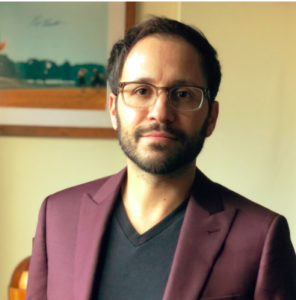
“At the same time as this representation has grown, so have efforts to take away rights from young queer, gay and trans kids,” he says. “This will have a big effect on undergraduates and graduate students for years to come. When someone is being attacked for simply being who they are, they will have a much harder time in their professional and academic pursuits.”
What does the future hold?
Official progress to support LGBTQIA+ diversity is easy to chart—within academia and the corporate world, there are increasing numbers of inclusion and equality policies, as well as LGBTQIA+ programming within professional society meetings and networking events. “Those all point to really positive signs, but there’s a lot of work to be done,” Esposito says.
The rise of anti-transgender laws and laws like Florida’s “Don’t Say Gay” measure for public schools threatens to slow or even halt this progress. And there’s still little funding for the inclusion of queer identities in data collection about science or research on how science impacts or discriminates against LGBTQIA+ people. “It’s a long, slow process to change the culture,” Esposito says.
With 10,000 unique monthly users and a community of 25,000 supporters, Esposito hopes 500 Queer Scientists will continue to make an impact. Groups like Out in STEM and the National Organization of Gay and Lesbian Scientists and Technical Professionals, as well as straight allies, also have a big role to play in making science and tech more welcoming spaces.
“To be an ally is really an active process,” says Esposito. “But the work of inclusion can’t be done without them.”
Lead photo courtesy of Shutterstock
